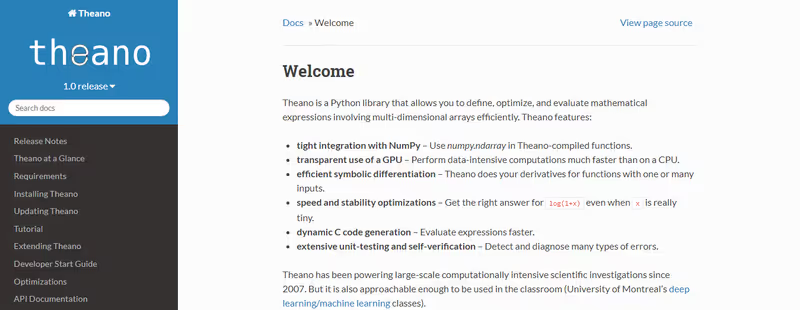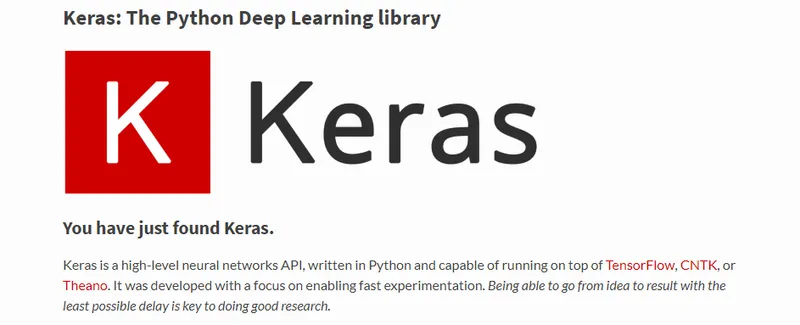

5 Most Popular Machine Learning Libraries in Python
Are you searching for the top machine learning liabraries, then here is the solutions. Find here the best trending Python Libraries for machine learning.
In the present day scenario, Python is one of the most accepted programming languages in the industry. There are multiple reasons for its acceptance and one of them is that python has a big and quality assortment of libraries. While working with python, the data scientists don’t require investing all their time in debugging as compared to other languages. They just need to take a call for determining which python library will work perfectly for their in-progress projects.
Just in case you are not familiar with Python Library – it is a compilation of methods and functions that facilitate you to carry out multiple actions without the necessity for writing your whole code.
Python is also known for solving the problems connected with machine learning. Python libraries like TensorFlow, Keras, Scikit-Learn, and Theanos have made programming machine learning comparatively straightforward. In this blog post, we will discuss the five most popular and trendy open source machine learning libraries.
1. TensorFlow

TensorFlow
TensorFlow is a well-known open source deep learning library built by Google. It is a mix between symbolic computation libraries like Theano and network specification libraries like Lasagne and Blocks. If you are utilizing Google photos and Google voice search, then you are indirectly using the models developed with Tensorflow.
Tensorflow is a computational framework majorly utilized for the principle of expressing algorithms that involve several Tensor operations. As neural networks are showcased in the form of different computational graphs, their overall implementation is executed utilizing Tensorflow in the form of a sequence of operations on Tensors. Tensors are N-dimensional matrices that correspond to our data.
Distributed computing is the major advantage of Tensorflow, in particular amongst multiple-GPUs. Tensorflow enables utilities for valuable data pipelining. They consist of built-in modules for visualization, serialization and required inspection of diverse modules. In recent times, the Tensorflow team initiated incorporating support for Keras which is a deep learning library.
2. Scikit-Learn

Scikit-Learn
Scikit-Learn is one of the machine learning libraries for python which is developed to interoperate with the numerical and scientific libraries of python including NumPy and SciPy. It is majorly measured for dealing with machine learning into a production system.
Scikit-learn provides unsupervised and supervised learning algorithms through a steady interface in python. Scikit-learn is designed on the SciPy. So, previous to use scikit-learn, you need to install SciPy.
The purpose behind the library is to offer a level of support and robustness required for utilization in production systems. This means there is an in-depth spotlight on factors like performance, documentation, the flexibility of use, collaboration and quality of code. Scikit-learn is persistent on modeling data but not on manipulating, loading and summarizing of data.
Some admired model groups offered by scikit-learn comprises of supervised models, parameter tuning, manifold learning, dimensionality reduction, clustering, feature selection, and cross validation.
3. Theano

Theano
Theano is a Python library that allows you to define, evaluate and optimize the mathematical expressions that entail multi-dimensional arrays efficiently. It is one of the most heavily used deep learning libraries and is alike NumPy including mathematical expressions and operations.
This library assists in the optimization and utilization of CPU and GPU, which further enhances the overall performance of data-intensive computation. Theano code is being written to take advantage of how a computer compiler works. The library, in fact, works as the neural networks’ building block. A professional can straightforwardly utilize this library if he needs suppleness as well as fine-grain customization.
4. Keras

Keras
It is a high-level neural networks application programming interface (API) which is written in python. It is a flexible and user-friendly library used for developing neural networks and runs upon Theano, TensorFlow and Cognitive Toolkit. It is popular as it enables swifter experimentation.
Keras runs flawlessly on GPU and CPU, supports recurrent and convolutional networks or their combinations and empowers quick as well as straightforward prototyping.
It facilitates the users to select whether the models they build are implemented on the symbolic graph of Theano or TensorFlow. The user interface is touch-inspired, so Keras is easy to use if you have prior experience with machine learning in Lua. The community of this library is extremely active and big, thanks to its comparative ease of utilization and exceptional documentation.
This library comprises a big number of implementations of used neural network creating blocks like objectives, optimizers, layers, activation functions and tools to enable work with images and text data.
You can build both graph-based and sequence-based networks with this library. This makes execution of highly complex network architectures like GoogLeNet and SqueezeNet much simpler.
5. PyTorch

PyTorch
In the midst of the list of python deep learning libraries, PyTorch is reasonably new. It is considered to be a loose port of Torch library to python. This library is prominent as it is backed by FAIR (Facebook AI Research Team). The other key reason behind its importance is it can manage dynamic computation graphs easily. This feature is missing in Theano, TensorFlow, and derivatives. Pytorch offers suppleness and is a promising deep learning development platform.
Pytorch is a simple to use API and integrates effortlessly with the python data science stack. It is fairly comparable to Numpy. Pytorch provides a framework to develop computational graphs on the go, and can even adjust them while runtime. This is helpful in scenarios where we don’t know how much memory we will require for creating a neural network. Pytorch comprises of simplified preprocessors, multiGPU support and custom data loaders which is a substantial advantage.
The multidimensional assortments in Pytorch are called Tensors and Pytorch backs multiple sorts of Tensors. Autograd module is a method or technique utilized by Pytorch while building neural networks. With this method, time can be saved on one epoch by considering the differentiation of factors while the forward pass itself.
The optim module utilized by Pytorch executes diverse optimization algorithms for developing neural networks. The nn module utilized by Pytorch characterizes a module set. We can consider these module sets to be a neural network layer that produces output from the input and may have a small number of trainable weights.
Conclusion
All the above best machine learning libraries based on python that data scientists and engineers are comprehensively using in the current day scenario. You can also get the advantage of machine learning solutions by approaching the best software development company. It is essential to gain knowledge and get familiarized with these libraries for implementing machine learning.



